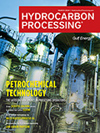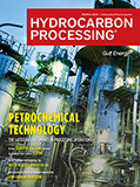Utilities
Lummus Technology to provide proprietary heaters to Amiral petrochemical complex in Saudi Arabia
Lummus Technology announced a contract award from Hyundai Engineering & Construction Co. Ltd. to provide eight proprietary Short Residence Time (SRT®) ethylene cracking heaters at SATORP's Amiral petrochemical complex in Saudi Arabia.
Digitalization in refineries: A strategic roadmap for operational excellence—Part 1
The refinery industry is one of the biggest industries worldwide. According to Statista, the global oil refinery capacity tipped 100 MMbpd in 2022. This capacity reflects nearly a twofold increase since 1970.
Advanced analytics solutions propel decarbonization and sustainability initiatives
Industrial process manufacturers and refiners are facing a storm of disruptive challenges. First and foremost, calls to mitigate climate change have taken a central position and must be prioritized, driving the decarbonization efforts of industrial and manufacturing processes.
Riding the wave of transition to a sustainable chemical industry
The chemical industry has shown resilience in addressing economic turbulence and supply chain disruptions after the COVID 19 pandemic.
Refineries’ pandemic turmoil—KNPC’s gasoline demand: Opportunities and challenges
The COVID-19 pandemic is regarded as one of the most exceedingly difficult challenges faced in the oil and gas industry's history.
Understanding and applying radiometric level and density profiling
There are several reasons to quantify and qualify the material properties of liquids in vessels and pipes.
Lummus acquires water and wastewater treatment technologies from Siemens Energy
Lummus Technology announced that it has reached an agreement with Siemens Energy to acquire assets from their water solutions portfolio including intellectual property and copyrights, trade secrets, and research and development properties. The technologies address water and wastewater needs of the oil and gas industry using carbon adsorption, biological treatment and hydrothermal processes.
Digital Technologies: Do not just monitor bad actor machines: Start when they are healthy
Often, facilities hesitate to invest in monitoring rotating equipment until the machine fails. By that time, there is no background information, such as vibration or temperature data, to help site engineers diagnose the machine’s failure. However, by implementing a remote monitoring solution on healthy equipment, users can set a baseline of machine health to gain essential insights when the machine begins to fail.
SABIC setting its sights on the electrification of ethylene production
SABIC has signed an agreement with Coolbrook to assess Coolbrook’s Roto Dynamic Reactor (RDR) technology in support of decarbonizing ethylene production.
AWS unveils startups selected for the Clean Energy Accelerator 3.0 program
Amazon Web Services (AWS) announced the startups selected for the Clean Energy Accelerator 3.0. The program is designed to facilitate collaborations with mature startups developing breakthrough clean energy technologies.

- Renewable fuels project in Canada begins production 4/19
- Jet fuel demand growth lags as air traffic exceeds pre-pandemic level 4/19
- Jet2.com to use SAF at London Stansted Airport 4/19
- Neste and New Jersey Natural Gas target reducing greenhouse gas emissions with Neste MY Renewable Diesel 4/19
- Cepsa and Evos join up for green methanol storage in Spain and the Netherlands 4/19
- Russia's Bashneft oil company installs anti-drone nets to protect refineries 4/19




